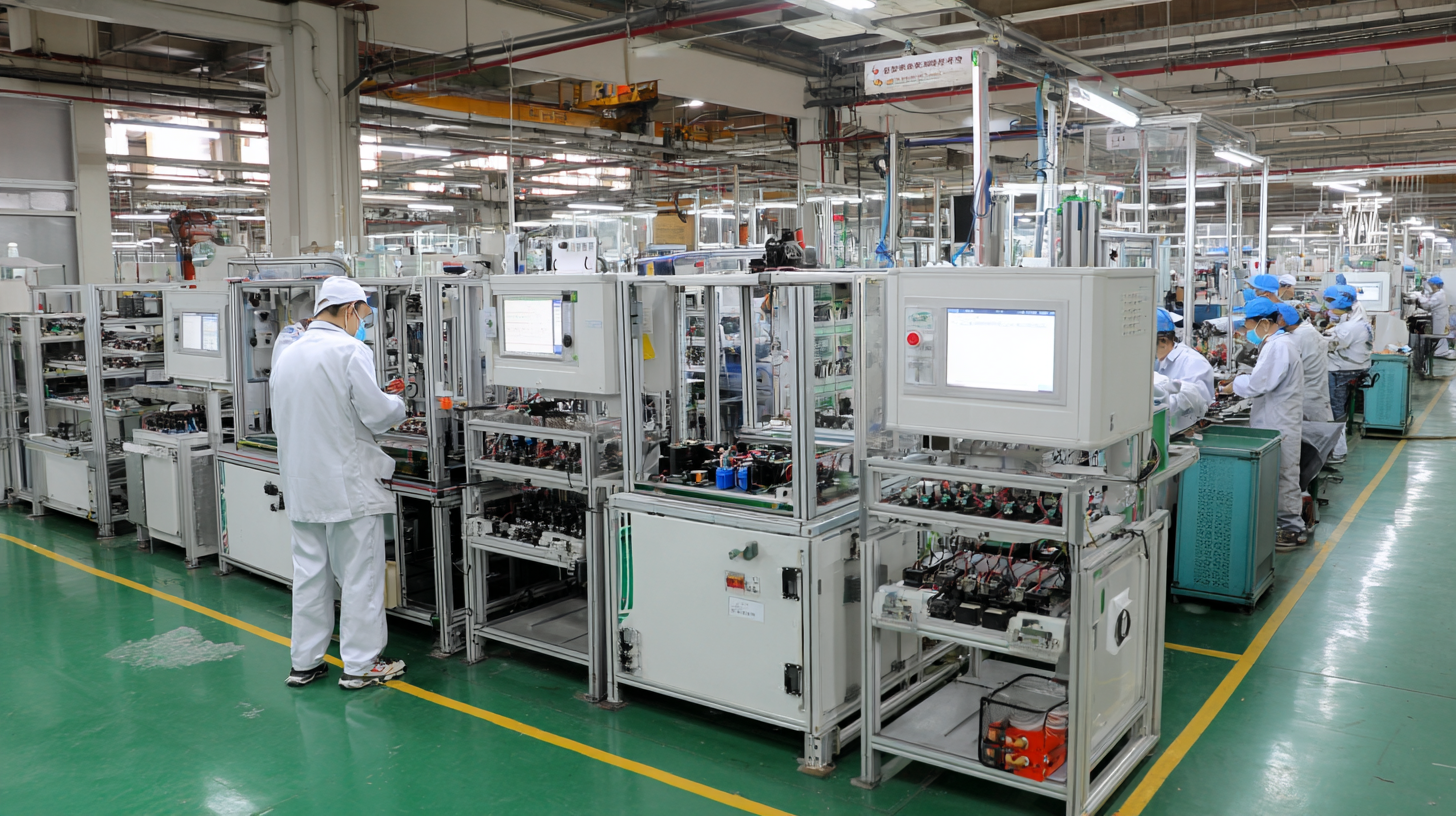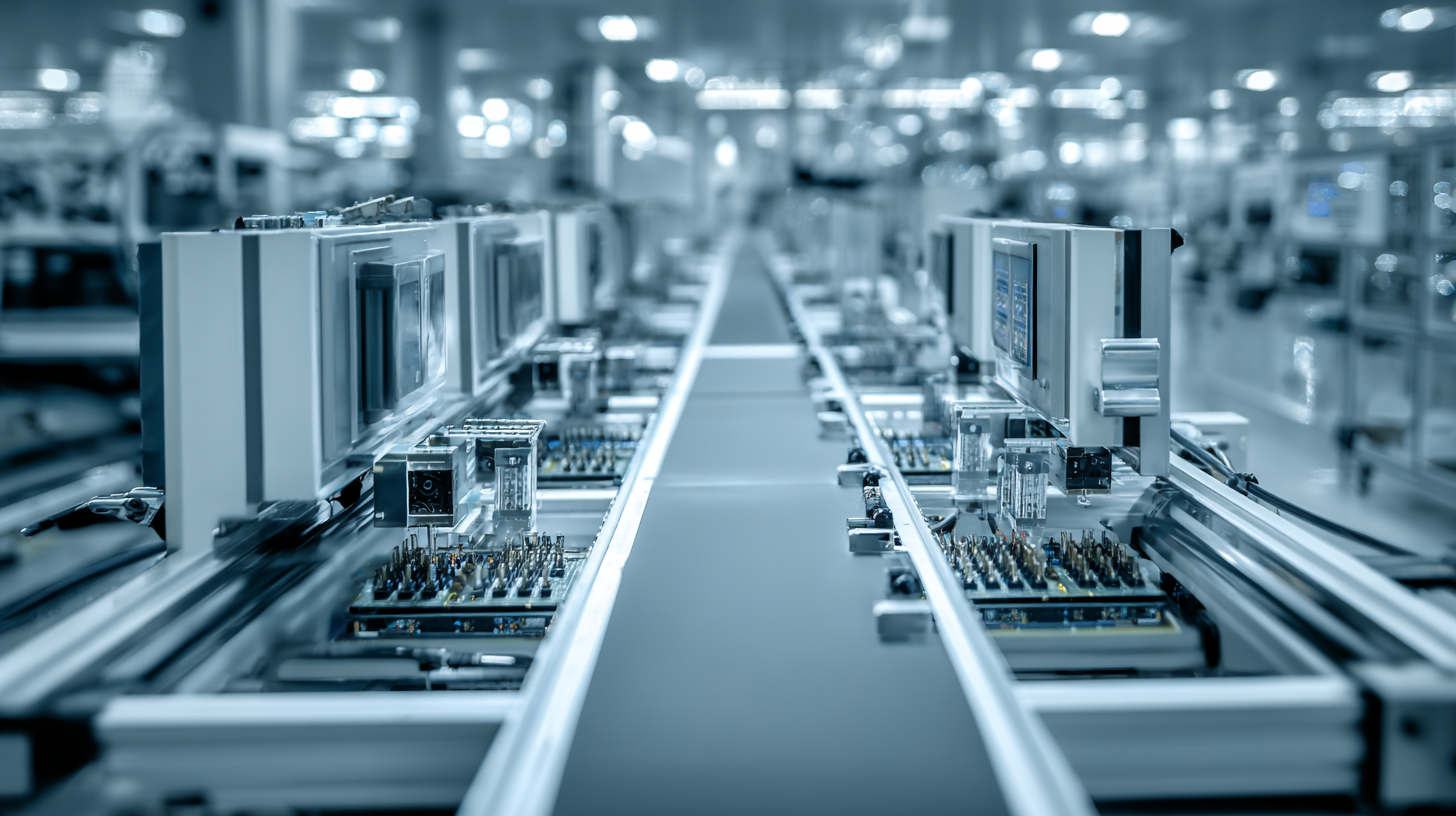Leading Global Manufacturing Facilities in Wire Harness Production Equipment
As the global demand for advanced technological solutions continues to rise, the importance of efficient wire harness manufacturing equipment cannot be overstated. According to a recent report by MarketsandMarkets, the wire harness market is projected to reach $58.8 billion by 2026, growing at a CAGR of 4.5% from 2021 to 2026. This surge is fueled by the increasing applications of wire harnesses in automotive, aerospace, and consumer electronics industries. Different types of wire harness production equipment are designed to meet the specific needs of various products, ensuring optimal performance and reliability. Understanding the characteristics and applicability of these alternatives is crucial for manufacturers aiming to enhance their production processes while meeting stringent quality standards. This blog will explore the leading global manufacturing facilities in wire harness production equipment, highlighting best practices and emerging trends within the industry.

The Evolution of Wire Harness Production Equipment: Key Technical Specifications
The industry of wire harness production equipment has experienced significant evolution over the years, driven by advancements in technology and the increasing demand for precision and efficiency. Key technical specifications that define modern equipment include automated cutting, crimping precision, and enhanced circuit testing capabilities. Today's machines are designed to handle a variety of wire types and sizes, allowing manufacturers to cater to diverse applications, ranging from automotive to aerospace.

When selecting wire harness production equipment, it's crucial to invest in models that offer scalability. As production demands grow, the ability to adapt and modify machinery without extensive downtime can save significant costs. Additionally, ensure that the equipment supports the latest industry standards. This not only guarantees quality but also streamlines integration with existing production lines.
Another vital consideration is the software integration of the machinery. Modern wire harness production often relies on sophisticated programming to optimize operations. Choosing equipment compatible with advanced software solutions can enhance monitoring and reporting capabilities, providing valuable insights into production efficiency and maintenance needs. This integration can lead to improved decision-making processes and overall operational excellence.
Understanding the Components of Wire Harness Manufacturing Systems
Wire harness manufacturing is a critical sector within the global manufacturing landscape, requiring sophisticated equipment and detailed understanding of its components. According to a report by Research and Markets, the global wire harness market is projected to reach $189.41 billion by 2026, growing at a CAGR of 5.28%. This growth is driven by increasing demand from the automotive and aerospace industries, where wire harnesses play a vital role in ensuring electrical connectivity and functionality.
Understanding the components of wire harness manufacturing systems is essential for optimizing production efficiency. Key elements include cutting, stripping, crimping, and assembly equipment, which are crucial for ensuring the reliability and quality of the final product. A study by MarketsandMarkets indicates that advancements in automation technology, such as robotic wire processing, can significantly enhance productivity while reducing the potential for human error. This integration of smart manufacturing technologies is essential for meeting the rising production demands while maintaining high standards of quality and safety. As manufacturers continue to innovate and improve their systems, the wire harness industry is poised for significant advancements in the coming years.

Advanced Technologies Driving Efficiency in Wire Harness Production
The wire harness production industry is witnessing a significant transformation driven by advanced technologies that enhance efficiency and productivity. According to a report by MarketsandMarkets, the global wire harness market is projected to reach $125 billion by 2026, growing at a CAGR of 6.5%. This growth can be attributed to innovations such as automation, IoT integration, and advanced manufacturing processes. These technologies not only streamline production but also reduce waste, leading to cost savings for manufacturers.
To maximize the benefits of technology in wire harness production, companies should consider investing in automation solutions such as robotic assembly and precision cutting machines. These systems can significantly increase production speeds while maintaining high-quality standards. Additionally, implementing IoT technologies allows for real-time monitoring and data analysis, enabling manufacturers to quickly identify inefficiencies and make informed decisions to enhance productivity.
Tip: Regularly assess your production line for potential upgrades. Investing in the latest machinery and technologies can lead to improved output and reduced operational costs. Furthermore, training your workforce to adapt to these technologies can ensure a smooth transition and maximize the potential of your investment. Keeping abreast of industry advancements will position your manufacturing facility as a leader in wire harness production.
Comparative Analysis of Global Manufacturers in Wire Harness Equipment
The wire harness production equipment industry is rapidly evolving, with various global manufacturers emerging as key players. A comparative analysis reveals distinct approaches among these manufacturers, each offering unique advantages. For instance, companies in North America tend to focus heavily on automation and precision engineering, reflecting the region's strong emphasis on quality control and efficiency. In contrast, Asian manufacturers often leverage cost-effective production techniques, attracting businesses that prioritize affordability without compromising essential quality standards.
European manufacturers, on the other hand, excel in innovative design and sustainable practices, integrating eco-friendly materials and energy-efficient technologies into their production processes. This regional diversity allows businesses seeking wire harness solutions to choose equipment that aligns not only with their operational needs but also with their strategic goals, such as sustainability and cost efficiency. As competition intensifies, understanding these differences is crucial for companies looking to invest in wire harness production equipment, ensuring they select partners that can provide the best fit for their manufacturing demands.
Comparative Analysis of Global Manufacturers in Wire Harness Equipment
Future Trends in Wire Harness Production: Innovations and Technical Developments
The wire harness production industry is on the brink of significant transformation, driven by innovations and technical developments that are shaping its future. As outlined in the upcoming international connectivity technology conference, key trends include advanced smart vehicle integration and the rise of electric and autonomous vehicles. These technologies demand more efficient and lighter wire harnesses, leading to the adoption of wireless Battery Management System (BMS) technologies, which dramatically reduce internal wiring and save on considerable space.
Tips:
To stay competitive, manufacturers should focus on investing in R&D for lightweight materials and intelligent integration technologies. Collaborating with local suppliers in the electric vehicle sector can also foster innovation, enhancing overall supply chain efficiency.
As we move towards 2024, the global automotive wire harness market is projected to grow significantly, highlighting a compelling opportunity for stakeholders. Companies should prepare for the upcoming trends and innovations, such as those presented at key exhibitions and conferences, to ensure they remain at the forefront of this rapidly evolving landscape. Embracing digital solutions and sustainable practices will be essential for future success.